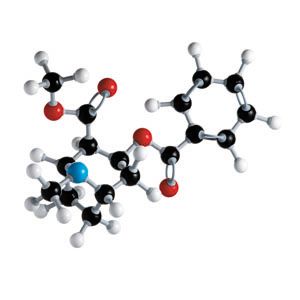Digital Microfluidics Coupled to Miniature MS
Great advances have been made in the field of miniaturization of mass spectrometers, opening up the potential to save time by performing analysis in the field; however, sample preparation has yet to catch up. A new study published in the journal Analytical Chemistry demonstrates the application of microfluidics integrated with a miniature mass spectrometer for the detection of illicit drugs in dried urine samples, which can simultaneously analyze four samples in under 15 min.
Photo Credit: Getty Images/Science Photo Library

Great advances have been made in the field of miniaturization of mass spectrometers, opening up the potential to save time by performing analysis in the field; however, sample preparation has yet to catch up. A new study published in the journal Analytical Chemistry demonstrates the application of microfluidics integrated with a miniature mass spectrometer for the detection of illicit drugs in dried urine samples, which can simultaneously analyze four samples in under 15 min.1
Various samples can be taken from people to screen for illicit drug intake, from hair to blood, but urine is the most commonly sampled because it is readily available in large volumes. Urine samples are typically screened using portable immunoassays, and, if a positive result is found, are forwarded to the laboratory for confirmation by gas chromatography (GC) or high performance liquid chromatography (HPLC) analysis. Aaron Wheeler, from the Institute of Biomaterials and Biomedical Engineering at the University of Toronto in Canada, told The Column: “We need ‘laboratory-quality’ techniques that are portable, suitable for analysis in the field. Mass spectrometry and sample handling are key pieces to laboratory‑quality results, and my collaborator, Graham Cooks (Purdue University), and I thought we could put together a new method in this area that would be useful.”
Urine samples were spiked with cocaine, benzoylecgonine, codeine, mepivacaine, and cocaine-d3. The microfluidics system was set up to deliver 22 μL of extraction solvent to each of the dried urine spots where it would be incubated for 5 min and then subsequently directed to a nano electrospray ionization (nanoESI) emitter. Wheeler said: “Working with ‘real samples’ (rather than standards in buffer) is always challenging. In this work, we analyzed drugs in urine, which is salty (not a perfect match for mass spectrometry) and forms solid crystals when it dries (not a perfect match for microfluidics). We worked through many iterations to solve these problems, eventually finding success by incorporating an in-line desalting step, and a device format relying on hydrophilic anchors to immobilize solid samples.”
For those who would like to learn more, Wheeler said: “We are eager for researchers to try the technique — a good place to start is by using our open-source ‘DropBot’ system, with code, schematics, assembly instructions, and more on-line at http://microfluidics.utoronto.ca/dropbot/.” - B.D.
Reference
1. A.E. Kirby, N.M. Lafreniere. B. Seale, P.I. Hendricks, R.G. Cooks, and A.R. Wheeler, Analytical Chemistry86, 6121– 6129 (2014).
This story originally appeared in The Column. Click here to view that issue.

Polysorbate Quantification and Degradation Analysis via LC and Charged Aerosol Detection
April 9th 2025Scientists from ThermoFisher Scientific published a review article in the Journal of Chromatography A that provided an overview of HPLC analysis using charged aerosol detection can help with polysorbate quantification.
Analyzing Vitamin K1 Levels in Vegetables Eaten by Warfarin Patients Using HPLC UV–vis
April 9th 2025Research conducted by the Universitas Padjadjaran (Sumedang, Indonesia) focused on the measurement of vitamin K1 in various vegetables (specifically lettuce, cabbage, napa cabbage, and spinach) that were ingested by patients using warfarin. High performance liquid chromatography (HPLC) equipped with an ultraviolet detector set at 245 nm was used as the analytical technique.














